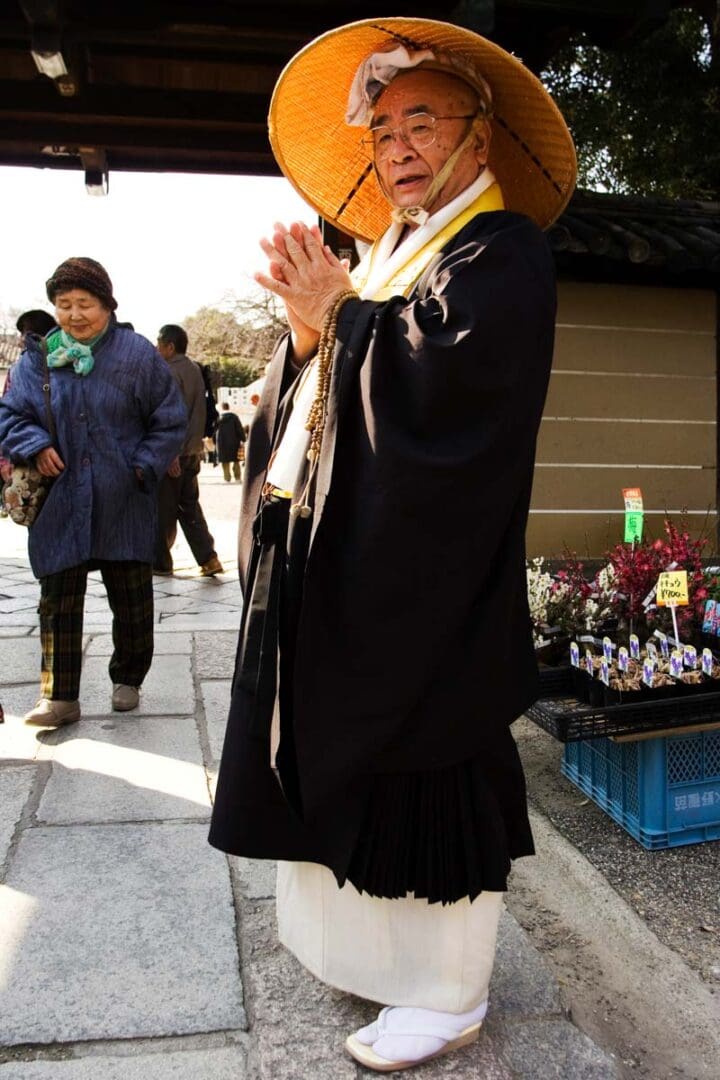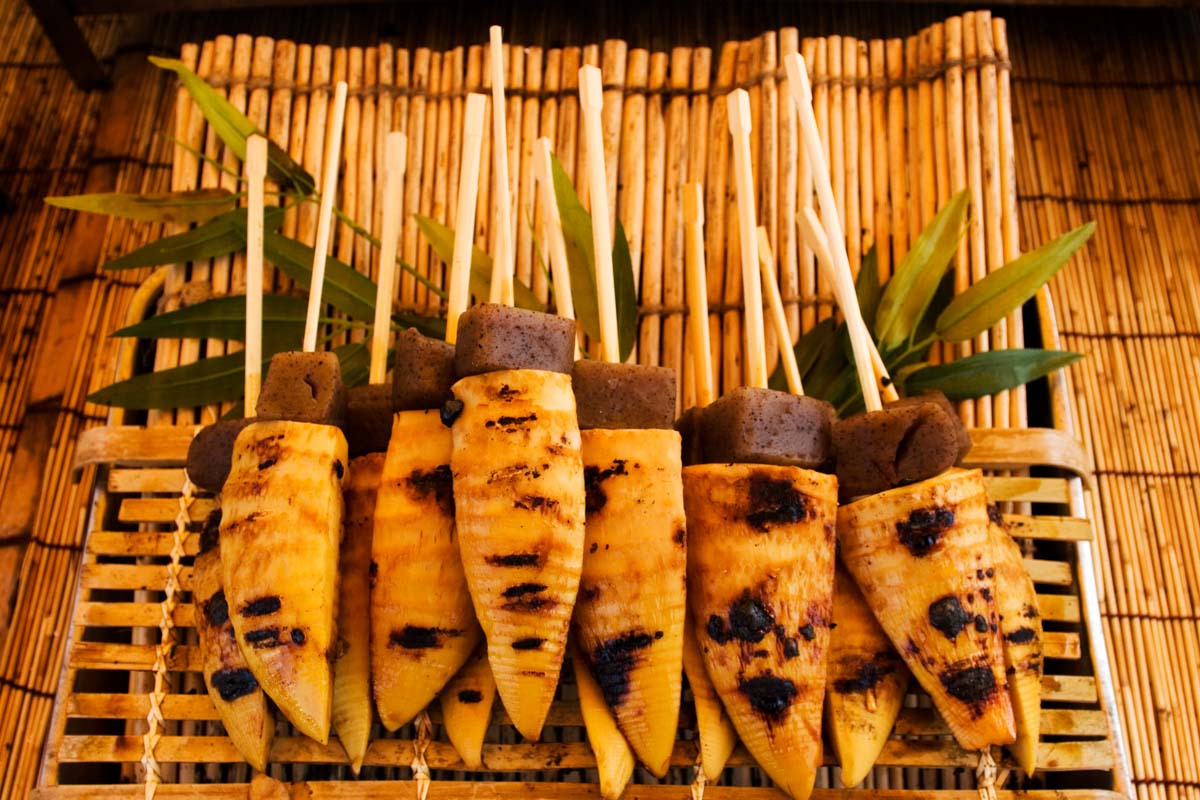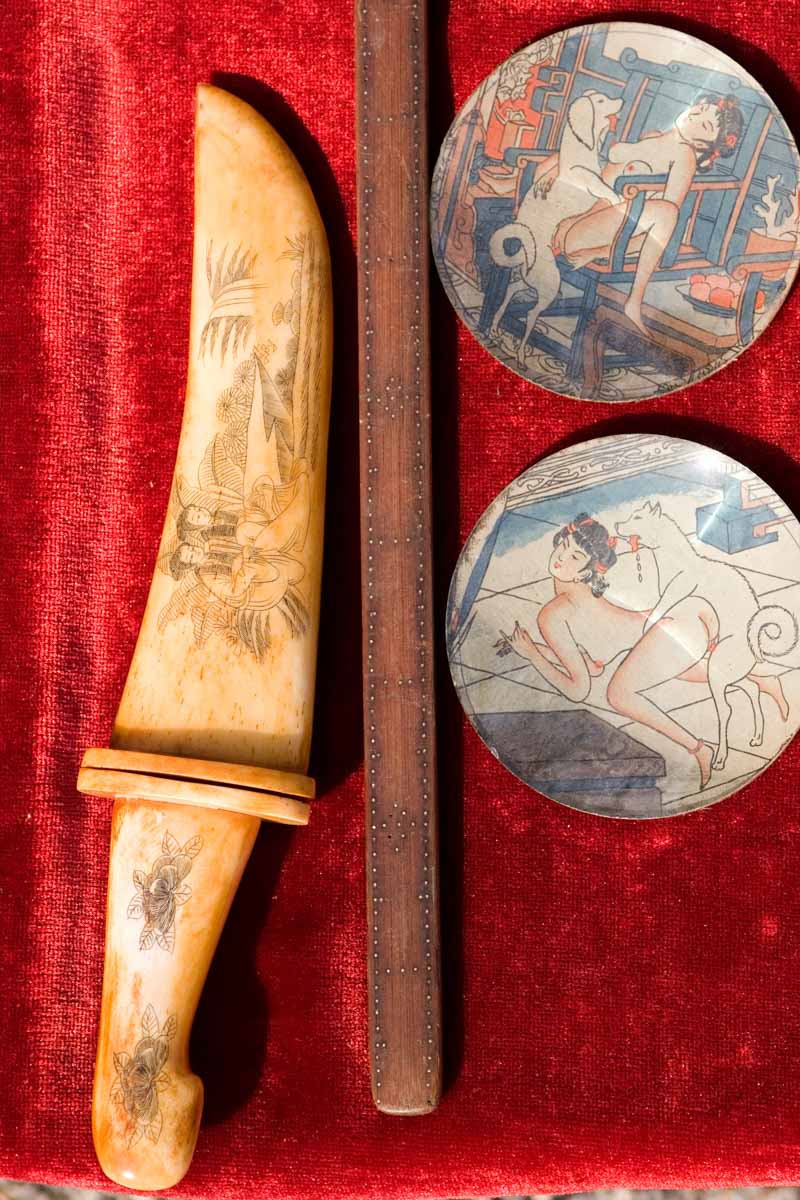Stuart Forster visits the Kyoto Toji Temple and attends the Kobo-san monthly market in Japan.
Disclosure: Some of the links and banner adverts below are affiliate links meaning, at no additional cost to you, I will earn a commission if you click through and make a purchase.
Going shopping in Japan is a great experience. You don’t need to be a foodie to enjoy the exquisite presentation of the food court at The Cube in Kyoto’s station, nor do you have to be a techie to appreciate the wares offered in the city’s big electronic stores.
When it comes to Japanese shopping experiences, the market held on the 21st day of each month on the grounds of Kyoto’s Toji Temple, tops my list. The monthly event is sometimes referred to as the Toji Market Kyoto.
The Kyoto flea market is an opportunity to enjoy popular Japanese cuisine and to see one of the country’s most historic temples at its liveliest and most colourful.

Visiting Kyoto’s monthly Kobo-san market
If your visit coincides with the 21st you’ll have a chance to see priests conducting ceremonies and locals involved in rituals. All of these are a bonus. The Toji Temple is a UNESCO World Heritage Site and is widely regarded as one of Kyoto’s must-see sights.

The Toji Temple’s five-storey pagoda is by far the most famous of Kyoto’s many landmarks.
Over the years, the pagoda has provided unfortunate proof that lightning can indeed strike twice or even more. Electrical storms destroyed four predecessors of the current pagoda, which dates from 1644.


An iconic Japanese pagoda
Located south-east of the city’s modern railway station-cum-shopping centre, the 187-feet (57-metre) high pagoda is a great orientation point. You can guide yourself towards the bustling market by looking for its sloping roofs.
The market was established in remembrance of the Buddhist priest, Kukai, who founded the temple in 796. Kukai was a key figure in the foundation of the esoteric Shingon school of Buddhism. He died on the 21st of March 835 and, after his death, was honoured with the title Kobo Daishi.

This explains why the market is held on the 21st of each month and also why locals refer to it as Kobo-san rather than the official name, Mieuiku.

Local shoppers and food
It’s fascinating to see how ancient traditions are kept alive on market days. Kobo-san is by no means a touristy market, though plenty of foreigners are drawn here. It’s also a place where locals hunt for bargains.

Used kimonos, freshly bean curd sweets, old machine tools and tempting foods from the countryside are among the wares that attract attention from Japanese visitors. Many halt to pray before the wooden statues housed in the Kodo, or lecture hall, while others light incense sticks at the shrines set up around the Mieido, the founder’s hall, where Kukai once lived.

I found that pausing to take a look at the shrines was a great way of breaking up the shopping, as more than a thousand stalls are erected on market days.

Antique items and Japanese cuisine
After a couple of hours of taking in the sights, photographing and examining beautiful antique items such as dragon-decorated lacquer pillow boxes and ceramic tea sets made by local craftspeople, I found myself floundering.
A grilled parsnip, served on a stick, proved the perfect remedy for my market fatigue.

Some people call Kobo-san a flea market, but that doesn’t convey that a good number of the stalls sell new goods, including shoes, hats, fans and handcrafted ceramics.

Antique hunters can have a field day here, as will anyone on the lookout for silk kimonos at knockdown prices.
I found countless items that would have made for great souvenirs from Japan. Images of geisha smiled up from a collection of black and white photographic prints dating from the 1920s.

On the set of Roshomon
Still very much a part of Kyoto’s heritage, I was later thrilled to see trainee geisha, known as maiko, in the Ponto-cho quarter of the city.
Calligraphy scrolls, film posters and even samurai swords were among the items which caught my eye on the market stalls. I couldn’t help wondering how the concierge might have reacted had I walked back into my hotel with a katana, the type of sword used by samurai warriors.

Like many film lovers, I’ve been intrigued by the samurai code of bushido ever since I started watching movies directed by Akira Kurosawa. Scenes from his 1950 film Roshomon were shot on the temple’s grounds.

Buddhism and snapping bargains
The ancient settings – with their high, tile-roofed halls and decorative gardens – are a fitting backdrop for browsing tables packed with antiques. Porcelain figures vied for my attention alongside brass Buddhas.
When it comes to picking up bargains, one school of thought says you should arrive early. The stalls are set up from 7.00 am and that’s when rare pieces can be snapped up.

Buying after 3.00 pm is also a popular strategy, as stall holders become keen to get rid of their remaining stock.
If you’re heading to Japan, I heartily recommend planning a visit to Kyoto on the 21st day of the month.

Location of the Toji Temple
The Toji Temple is approximately 15 minutes’ walk from Kyoto Station. The map below shows the location of the famous Kyoto temple:
Travel to Kyoto
I flew to Tokyo and then travelled to Kyoto by Shinkansen high-speed train. I’d long wanted to experience travelling on a bullet train.
Qatar Airways flies to Tokyo’s Narita International Airport via its Doha hub.

Hotels in Kyoto
Looking for accommodation in Kyoto? Staying in a traditional ryokan guest house is a way of experiencing Japanese heritage and hospitality. You could also seek out a hotel in the city.
Search for rooms in Kyoto via Booking.com:
Booking.com

Further information
For ideas about things to do and see in Kyoto, see the Kyoto Travel website.
Take a look at the Japan National Tourism Organization website for information about visiting Kyoto and elsewhere in the country.
Stuart Forster, the author of this post, is an award-winning travel writer. Stuart is a member of the British Guild of Travel Writers.
Thanks for visiting Go Eat Do and reading about my visit to the iconic Toji Temple and Kobo-san monthly market in Kyoto, Japan. Please feel welcome to explore more of my content. Not all are travel and food-related. Here’s a post about World Elephant Day.
The photos illustrating this story are by Why Eye Photography, based in the northeast of England.
If you enjoyed this post why not sign up for the free Go Eat Do newsletter? It’s a hassle-free way of getting links to posts on a monthly basis.
‘Like’ the Go Eat Do Facebook page to see more photos and content.
This post was originally published on 2 August 2013.







Hinda Toba
April 12, 2022 at 04:44Hi. Thank you so much, this is very helpful. Also so many cultural sites here and I think I need to know information about them all. Is there any local guide that speaks English that tell us the story behind it?
Go Eat Do
April 12, 2022 at 08:25I would suggest searching companies such as Tours By Locals or Go With Guide to see what is currently available.